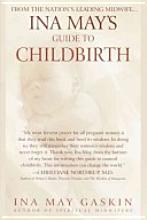The Midwife Choice, Part I
 Last summer, when Attachment Mama was in its early conception, I had a team of wonderful, smart college and recent college-grad interns assisting me in creating the content. During their summer internship, they also learned a bit about marketing and PR, helping Mark and I promote our Hideout Studios to local artists and media.
Last summer, when Attachment Mama was in its early conception, I had a team of wonderful, smart college and recent college-grad interns assisting me in creating the content. During their summer internship, they also learned a bit about marketing and PR, helping Mark and I promote our Hideout Studios to local artists and media.
One of our interns, Nicole Mundy, now a recent Tulane grad, was particularly talented at research and writing. Over the previous year, I had collected email posts about midwives from my local Attachment Parenting support group with the vision of distilling the information into something meaningful for the community. I sent the messy collection of information to Nicole, and within a few weeks, she put together a solid article that I’m going to split into a series together with my still unpublished home V-BAC story which I’ll post later this week.
Most of the people I grew up with can’t comprehend the choice to have a baby outside of a hospital with a midwife — and no drugs. To them and many others, it seems dangerous and irresponsible. For those of us that consciously chose the option, it certainly wasn’t about a masochistic desire to suffer more or to put ourselves or our unborn child at risk. Quite the opposite! We made the choice because the philosophy of midwifery care appealed to us, including the emotional and physical benefits to both mother and child that are present with natural childbirth, free from unnecessary interventions that can lead to unnecessary cesarean births – a definite risk to both mother and child and yet the most common form of surgery performed in the United States today. I recently read that 50 percent of c-sections performed now are unnecessary!
I personally made the choice after reading Ina May’s Guide to Childbirth which I highly recommend for anyone curious to learn more about the empowering, feminist nature of natural childbirth with a midwife and what many women seek to avoid that commonly occurs in hospitals.
According to the American Pregnancy Association, the Midwives Model of Care is based on the fact that pregnancy and birth are normal life processes. The midwives model of care includes:
Having experienced both a hospital, c-section birth and a natural birth at home, I’ve got full appreciation for both the advances of western medicine that can intervene with childbirth when it’s necessary and the empowering, spiritual nature of having your child at home under the care of midwives.
Not every state is progressive in supporting a woman’s choice to use a midwife to support the birth of her child. You can check here on the Citizens for Midwifery site (a fantastic resource) for the legal status of midwifery in your state.
In Austin — and particularly in my circle of friends here — midwives are very popular. All of my friends who were under the care of a midwife for their pregnancies and births had their babies at home. But many women opt for a birthing center as the “in between” option between home and hospital.
Homebirth versus Birthing Center, by Nicole Mundy
Pro Home Birth
The continuity of care — having the same person for all prenatals, birth, and postpartum visits — is a big reason many women choose a home birth. Not only does it build a deeper relationship between mother and midwife, it’s also a preventative safety measure. Medical issues are less likely to be missed if one midwife is following your progress throughout pregnancy.
It’s better understood in retrospect (first-time mamas take note) that women in labor do NOT want to get in a car—staying at home for the birth, not having to come right home, and having post-partum home visits is pretty awesome.
If you have young children, an extra midwife or doula can help hold down the fort and allow you to be more present during and after birth.
Pro Birth Center
Many birthing centers offer comforts you may not have access to at home (jacuzzi tubs, lots of space, great food). If planning your delivery is stressing you hard (i.e. more than you think it should), a center can be a safe haven and bring a sense of peace to the birth experience.
It generally goes that bigger birthing centers are more standardized, and the smaller are more personalized. Ergo, some women wont get the experience they want at a practice like the Austin Area Birthing Center. The rotating schedule of whose on-call gives you virtually no control over who attends your birth, and they tend to follow set protocols on cord-cutting, birth-positions, and prenatal classes.
Pros and Cons of Birthing Centers and Home Births
BIRTHING CENTER
Pros
- Fewer medical interventions than in hospitals
- Covered by most insurance plans
- Often have many natural pain relief options such as jacuzzis
- Mother can eat and drink as she desires
Cons
- Continuous care not always guaranteed
- Transfer to hospital is required for complications with mother or baby
- Typically must leave birth center within about 6-10 hours after birth
HOME BIRTH
Pros
- Environment is more private/intimate
- Midwives and doulas are personally known to mother and family
- Little to no medical intervention
- No restriction on eating/positioning
- Lowest risk of infection
- Home Birth has the lowest chance of a Cesarean
Cons
- Home Birth requires transfer for complications of mother or baby
- Expertise and training of midwives vary
- Mother and labor partners may have to provide their own pain relief options such as a tub rental
- Not covered by all insurance
CONSIDERATIONS
A mother choosing a home birth must, above all else, deeply desire to give birth at home. Even though a home birth can save money, cost alone is not sufficient motivation. The most successful home birthers are highly committed and trust their body’s natural ability to birth. They devote time and energy to finding the right birth practitioner, doing their own research and taking care of themselves.
For some mothers, the prospect of being at home in familiar surroundings provides tremendous comfort and reassurance. Others may feel uneasy that more technical medical assistance isn’t at hand. With a skilled midwife and a non-meddlesome approach, home birth is safe for most mothers and babies.
Thanks Nicole!
One Response to “The Midwife Choice, Part I”
Leave a Reply to cypress sun (amy)


Recent Posts
- Survival Tips for Working Moms
- Happy Families Are All Alike
- Sitter Stories
- Dear Time Magazine...
Categories
Popular Posts
Blogs I Like...















I look forward to reading your VBAC story. I wish that I could have one, but the only problem is….I don’t want another child.
I’m a broken record here…but every time I see a post on this issue I have to share my opinion. If you are planning a homebirth – hire a doula (or as someone has just informed me is possible, a partner midwife). Our very popular midwife bailed on us, and we were left with no support
in the hospital. I ended up w/what I believe was an unnecessary C-section, and a horrible hospital experience.